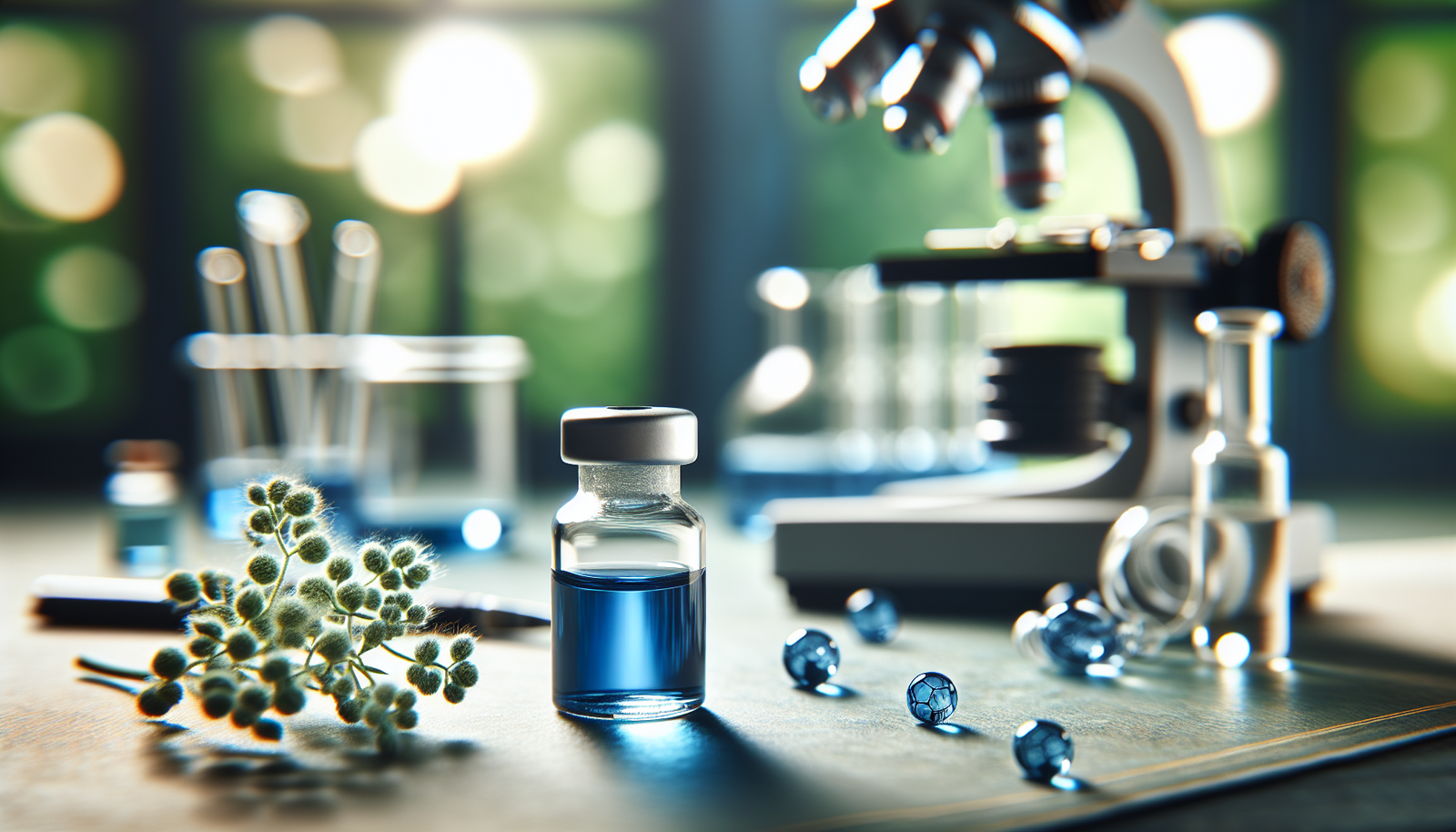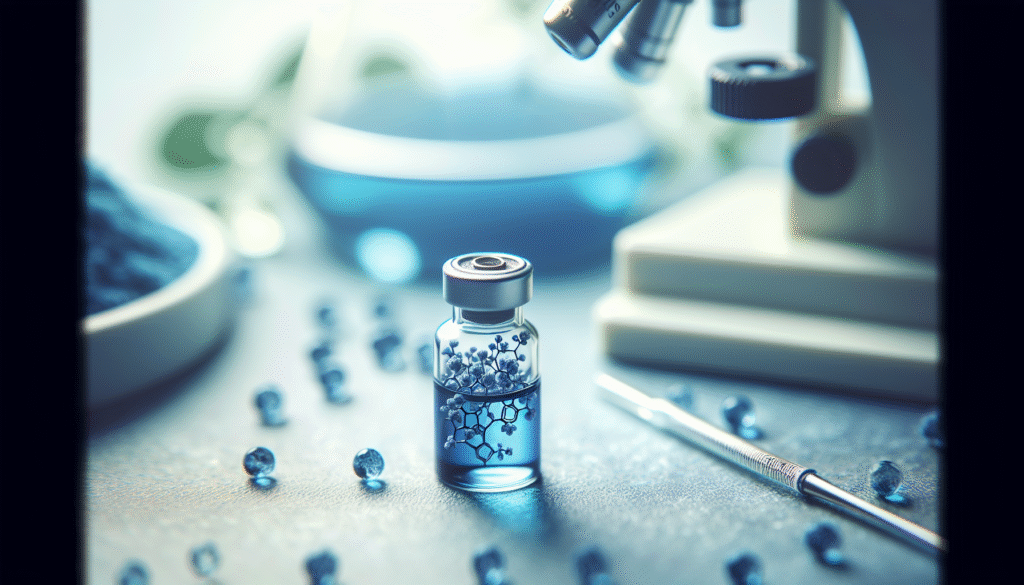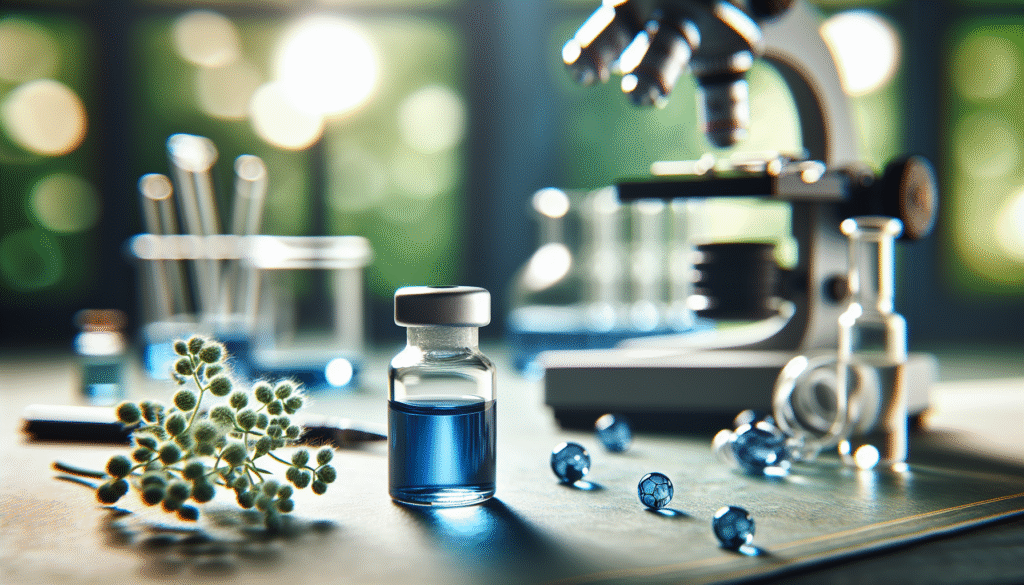
Have you ever considered how powerful certain compounds can be in promoting health and wellness? One such compound that has garnered attention in recent years is Methylene Blue. While it is often overshadowed by more mainstream antioxidants, its potential benefits warrant a closer look.

What is Methylene Blue?
Methylene Blue is a synthetic dye that has been used for over a century. Originally developed for use in the textile industry, it also has applications in medicine, particularly in the treatment of methemoglobinemia—a condition where the blood is unable to carry adequate oxygen. Beyond its medical uses, Methylene Blue has attracted interest for its antioxidant properties, prompting researchers to investigate its broader potential in health and wellness.
Chemical Composition and Properties
Methylene Blue is chemically known as thionin and has the molecular formula C16H18ClN3S. It is characterized by a blue color that makes it easily identifiable. Its ability to undergo reduction and oxidation reactions makes it particularly interesting in the study of antioxidants. This property allows Methylene Blue to scavenge free radicals in the body, potentially reducing oxidative stress.
Table 1: Basic Properties of Methylene Blue
| Property | Detail |
|---|---|
| Molecular Formula | C16H18ClN3S |
| Color | Blue |
| Solubility | Soluble in water |
| Applications | Medical, Biological Research |
Understanding Antioxidants
To appreciate the significance of Methylene Blue, it’s essential to understand antioxidants. Antioxidants are molecules that neutralize free radicals—unstable atoms that can cause cellular damage. Oxidative stress occurs when there is an imbalance between free radicals and antioxidants in the body, leading to various health issues such as inflammation, aging, and chronic diseases.
Types of Antioxidants
Antioxidants can be categorized into two main types: endogenous and exogenous.
Endogenous Antioxidants
These are produced by the body. Examples include:
- Superoxide dismutase (SOD)
- Glutathione
- Catalase
Exogenous Antioxidants
These are obtained from dietary sources and include:
- Vitamin C
- Vitamin E
- Flavonoids found in fruits and vegetables
Methylene Blue falls into a unique category, as it has properties that make it both an antioxidant and a dye. Understanding its dual nature enhances its appeal as a therapeutic agent.
Mechanism of Action
Methylene Blue exerts its antioxidant effects primarily through its ability to donate electrons, which stabilizes free radicals and converts them into less harmful molecules. Its mechanism involves several biochemical pathways:
-
Electron Transfer: Methylene Blue can accept and donate electrons, which influences various redox reactions in the body.
-
Reduction of Oxidative Stress: By diminishing the presence of free radicals, Methylene Blue helps lower oxidative stress, potentially mitigating cellular damage.
-
Influence on Mitochondrial Function: Methylene Blue has been shown to enhance mitochondrial respiration and support ATP production, which may contribute to its antioxidant properties.
Table 2: Mechanisms of Methylene Blue Action
| Mechanism | Description |
|---|---|
| Electron Transfer | Stabilizes free radicals through redox reactions |
| Reduction of Oxidative Stress | Mitigates cellular damage by neutralizing free radicals |
| Mitochondrial Support | Enhances respiration and ATP production |
Research on Methylene Blue’s Antioxidant Properties
Recent studies have begun shedding light on the potential health benefits linked to Methylene Blue’s antioxidant properties. Research across various fields has highlighted its protective effects against neurodegenerative diseases, its role in enhancing cognitive function, and its impact on cellular health.
Neuroprotective Effects
Several studies suggest that Methylene Blue may confer neuroprotective effects. For instance, it has been investigated for its potential in treating conditions like Alzheimer’s disease. Research indicates that its ability to reduce oxidative stress in neuronal tissues may help slow down the progression of neurodegenerative diseases.
Highlighted Study
In a randomized controlled trial, patients treated with Methylene Blue showed improved cognitive scores compared to the placebo group. This raises questions about its viability as a therapeutic agent for brain health.
Cardiovascular Benefits
Methylene Blue might also offer protective effects against cardiovascular diseases. By reducing oxidative stress in blood vessels, it may help improve circulation and reduce inflammation. Some studies have indicated that Methylene Blue can aid in restoring normal blood flow during instances of ischemia.
Antimicrobial Properties
Interestingly, Methylene Blue has been explored for its antimicrobial properties as well. It has shown effectiveness against various pathogens, suggesting that it could be employed as an adjunct in treating infections.

Applications Beyond Medicine
Beyond clinical uses, Methylene Blue’s antioxidant properties have implications in various other fields, including biology, agriculture, and even cosmetics.
Biological Research
In biological research, Methylene Blue is utilized as a stain for cellular visualization. Its properties allow researchers to track cellular processes, furthering our understanding of cellular biology and pathology.
Agriculture
Within agriculture, Methylene Blue’s potent antioxidant effects have been studied for enhancing plant growth and resilience. Preliminary investigations suggest that it may promote better root development and crop yield.
Cosmetic Industries
The cosmetics sector is beginning to recognize the potential of Methylene Blue as an ingredient in anti-aging products. Its antioxidant properties may help combat skin damage caused by environmental factors, contributing to healthier skin.
Safety and Dosage Considerations
When considering Methylene Blue, you must be aware of its concentration and dosage. While research indicates its potential benefits, incorrect dosages can lead to adverse effects, including nausea, headache, and other undesirable symptoms.
Appropriate Dosages
Research studies have utilized Methylene Blue in varying dosages, typically ranging from 0.5 mg to 4 mg per kg of body weight. However, you should consult healthcare professionals before beginning any treatment regimen involving Methylene Blue.
Table 3: Dosage Considerations
| Route of Administration | Typical Dosage Range |
|---|---|
| Oral | 0.5 – 4 mg/kg body weight |
| Intravenous | 10 – 50 mg, depending on condition |

Conclusion
Methylene Blue’s antioxidant properties present a fascinating avenue for further exploration. From its potential neuroprotective effects to its implications in agriculture, this compound deserves attention from both the scientific community and the general public.
As you consider the future of antioxidants in health and wellness, Methylene Blue stands out as a promising candidate that embodies the intricate relationship between chemistry and biology. Its multi-faceted applications, safety profile, and efficacy warrant more in-depth research to unlock its full potential.
Ultimately, understanding compounds like Methylene Blue can empower you to make informed decisions about your health and wellness strategies. The journey of discovery is ongoing, and Methylene Blue is just one example of how science continues to unveil the complexities of life at its most fundamental level.